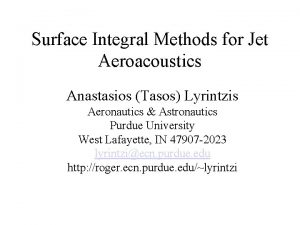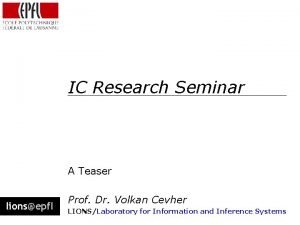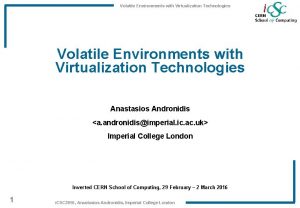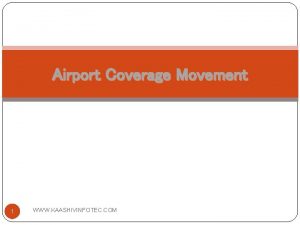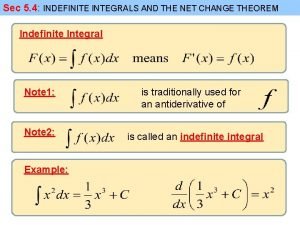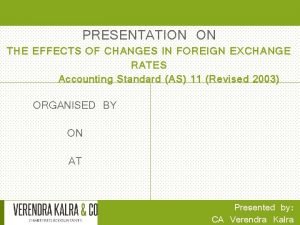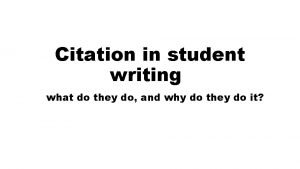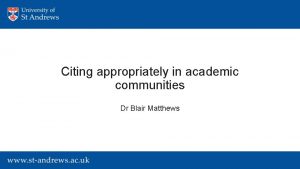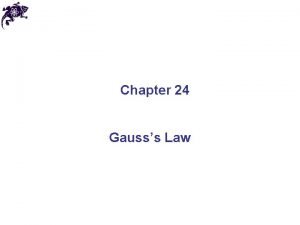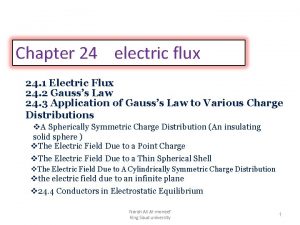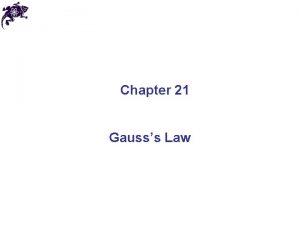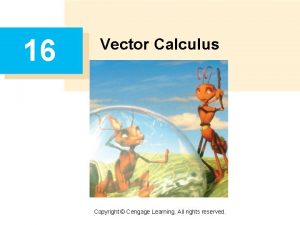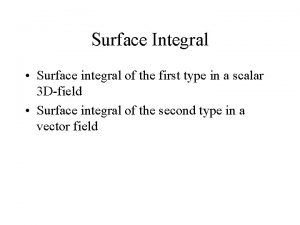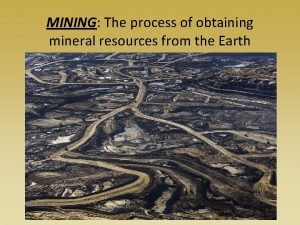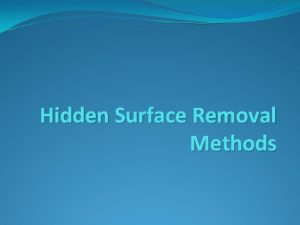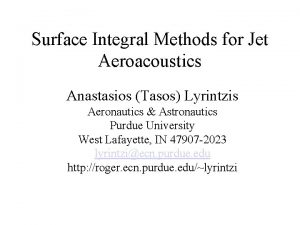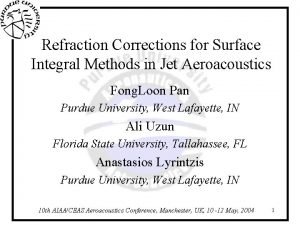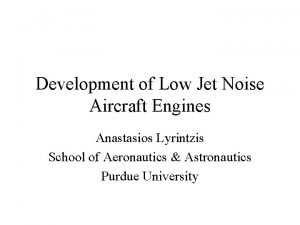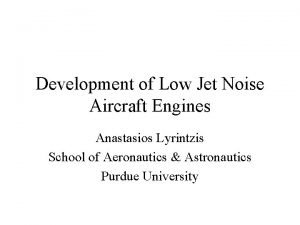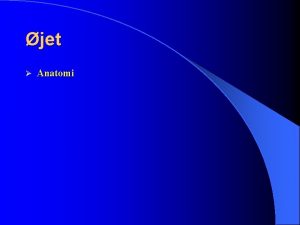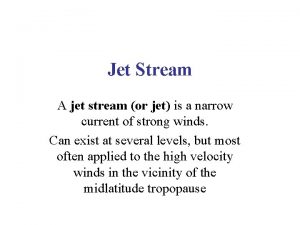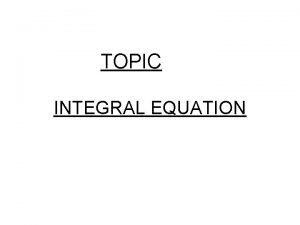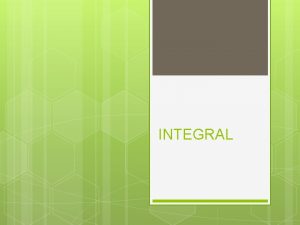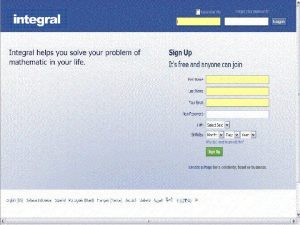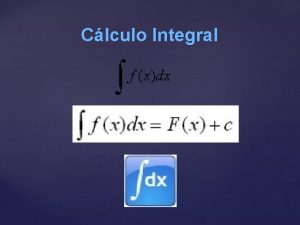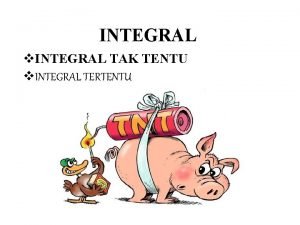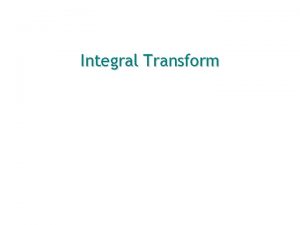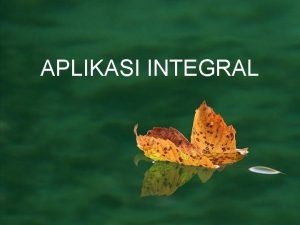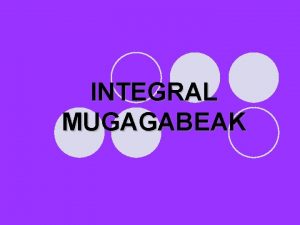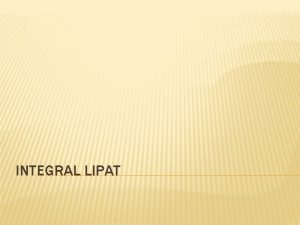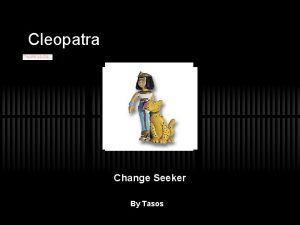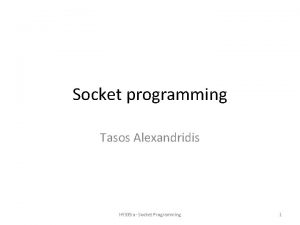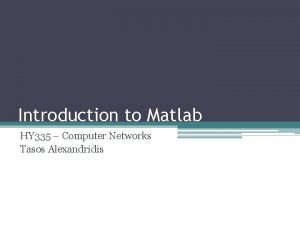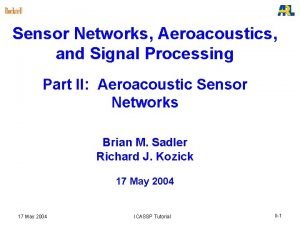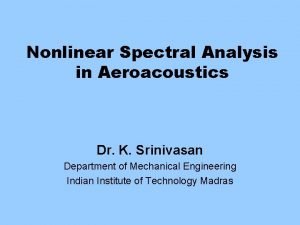Surface Integral Methods for Jet Aeroacoustics Anastasios Tasos

































- Slides: 33

Surface Integral Methods for Jet Aeroacoustics Anastasios (Tasos) Lyrintzis Aeronautics & Astronautics Purdue University West Lafayette, IN 47907 -2023 lyrintzi@ecn. purdue. edu http: //roger. ecn. purdue. edu/~lyrintzi

Motivation • NASA’s goal: reduce aircraft noise by a factor of 4 within the next twenty years • Improvements in the current state-of-the-art prediction methodologies are needed

Methods of Acoustic Analysis • • Straight CAA – expensive Perturbation methods (e. g. LES+LEE) Lighthill’s acoustic analogy (volume integrals) Kirchhoff method (surface integrals) near-field: CFD - nonlinear far-field: Wave equation - linear • Porous FW-H equation (same as Kirchhoff)

Control Surface

Kirchhoff’s Method Wave equation is valid outside a stationary surface (1) : some acoustic variable, e. g. p’ : free stream sound speed r is the distance from source to observer implies evaluation at the retarded time t-r/c is the source emission angle is the Kirchhoff surface normal vector A dot indicates a source time derivative

Porous FW-H equation Define new variables: and (2) (3) where subscript o implies ambient conditions, superscript implies disturbances

Porous FW-H equation (continued) The integral expression for the porous FW-H equation can be written as where (4) (5) (6)

Jet Noise Predictions • S cannot surround the entire source region • MGB can be used outside S • Refraction corrections

Refraction Corrections • Pilon and Lyrintzis (1997) Use geometric acoustics (Amiet, 1977) Us velocity at the downstream end of S qs sound emission angle wrt the jet axis qo emission angle in the ambient air

Contours of a 2 r’/po (1996)

Mach 0. 9, Reynolds Number 400, 000 Isothermal Jet LES (Oct. 2003) • • No explicit SGS model Spatial filter is treated as the implicit SGS model 15. 6 million grid points Streamwise physical domain length is 35 ro Domain width and height are set to 30 ro 50, 000 time steps total 5. 5 days of run time using 200 POWER 3 processors on an IBM-SP

Divergence of Velocity Contours

Jet Aeroacoustics • Far field noise is estimated by coupling near field LES data with the Ffowcs Williams – Hawkings (FWH) and Kirchhoff’s methods • Overall sound pressure levels and acoustic pressure spectra are computed along an arc located at 60 ro from the jet nozzle • Also investigated the sensitivity of far field noise predictions to the position of the control surface on which aeroacoustic data is collected

Jet Aeroacoustics (continued) • Acoustic data collected every 5 time steps over a period of 25, 000 time steps • Shallow angles ( ) are not accurately captured since streamwise control surface is relatively short • Maximum Strouhal numbers resolved (based on grid spacing) : § 3. 0 for Control Surface #1 § 2. 0 for Control Surface #2 § 1. 5 for Control Surface #3

Ffowcs Williams – Hawkings Method Prediction of Acoustic Pressure Spectra

Kirchhoff’s Method Prediction of Acoustic Pressure Spectra

Ffowcs Williams – Hawkings Method Prediction of OASPL

Kirchhoff’s Method Prediction of OASPL

Acoustic Pressure Spectra Comparison with Bogey and Bailly’s Reynolds number 400, 000 LES

Acoustic Pressure Spectra Comparison with Bogey and Bailly’s Reynolds number 400, 000 LES

Closed Control Surface Calculations • The control surface is closed on the outflow • FWH method is used only with the closed control surface • No refraction corrections employed

OASPL Comparison

Spectra Comparison at R = 60 ro, q = 30 o

Noise Calculations Using Lighthill’s Acoustic Analogy • Recently developed a parallel code which integrates Lighthill’s source term over a turbulent volume to compute far-field noise • The code has the capability to compute the noise from the individual components of the Lighthill stress tensor

Lighthill Code • Code employs the time derivative formulation of Lighthill’s volume integral • Uses the time history of the jet flow data provided by the 3 -D LES code • 8 th-order accurate explicit scheme to compute the time derivatives • Cubic spline interpolation to evaluate the source term at retarded times

Far-field Noise • Time accurate data was saved inside the jet at every 10 time steps over a period of 40, 000 time steps • 1. 2 Terabytes (TB) of total data to process • Used 1160 processors in parallel for the volume integrals • Cut-off frequency corresponds to Strouhal number 4. 0 due to the fine grid spacing inside the jet

OASPL Predictions Using Lighthill Analogy

Spectra comparison with FWH Predictions at R = 60 ro, q = 60 o

Jet Noise Conclusions • Both Ffowcs Williams – Hawkings and Kirchhoff’s methods give almost identical results for all open control surfaces • Closed control surface + FWH give predictions comparable to Lighthill’s acoustic analogy prediction

Jet Noise Conclusions (continued) • There acoustic sources (that cause cancellations) located in the region 32 ro < x which were not captured in the LES due to short domain size • Due to the inflow forcing, OASPL levels are overpredicted relative to experiments

General Conclusion • A simple set of portable subroutines based on porous FWH/Kirchhoff methods can be developed to evaluate the far-field noise from any aerodynamic near-field code

AARC Project • Review paper presented in CEAS Workshop in Athens Greece (from CFD to CAA); also, Int. Journal of Aeroacoustics (in press) • Visited and delivered Kirchhoff/FW-H codes to NASA and all AARC industry affiliates

Future Directions • Noise from unresolved LES scales: - Resolved Scales: LES + FW-H - Unresolved Scales: MGB/Tam’s approach (as currently used for RANS) • Supersonic jets • Include nozzle lips • Complicated geometries (DES for chevrons, mixers -- multi-block code)
 Tasos lyrintzis
Tasos lyrintzis Tasos kyrillidis
Tasos kyrillidis Anastasios angelopulos
Anastasios angelopulos Anastasios andronidis
Anastasios andronidis Yelvington jet aviation jet fuel
Yelvington jet aviation jet fuel Flux surface integral
Flux surface integral Net change theorem
Net change theorem Exchange difference of integral foreign operation is
Exchange difference of integral foreign operation is Non integral citation
Non integral citation Antiderivatif adalah
Antiderivatif adalah Non integral citation
Non integral citation Surface integral of electric field
Surface integral of electric field Surface integral of electric field
Surface integral of electric field Electrostatic equilibrium
Electrostatic equilibrium Surface integral
Surface integral X=tcost y=tsint
X=tcost y=tsint Metal coping fpd
Metal coping fpd Subsurface mining
Subsurface mining Visible surface detection methods
Visible surface detection methods High surface tension vs low surface tension
High surface tension vs low surface tension Curved surface area and total surface area of cone
Curved surface area and total surface area of cone Prism total surface area formula
Prism total surface area formula Aktiv exspektans
Aktiv exspektans Urban torhamn
Urban torhamn Strategi för svensk viltförvaltning
Strategi för svensk viltförvaltning Boverket ka
Boverket ka Verksamhetsanalys exempel
Verksamhetsanalys exempel Novell typiska drag
Novell typiska drag Tack för att ni har lyssnat
Tack för att ni har lyssnat Läkarutlåtande för livränta
Läkarutlåtande för livränta Klassificeringsstruktur för kommunala verksamheter
Klassificeringsstruktur för kommunala verksamheter Cks
Cks Inköpsprocessen steg för steg
Inköpsprocessen steg för steg Påbyggnader för flakfordon
Påbyggnader för flakfordon
